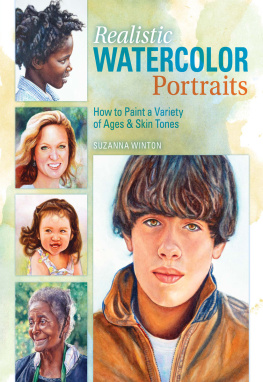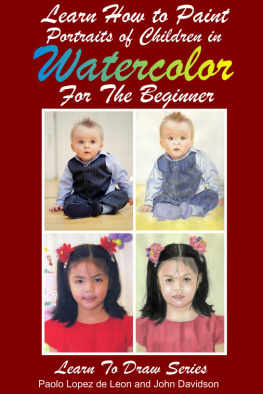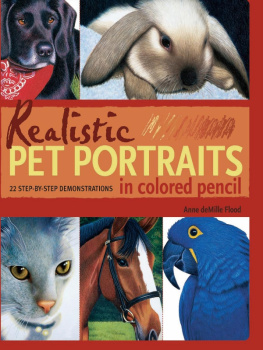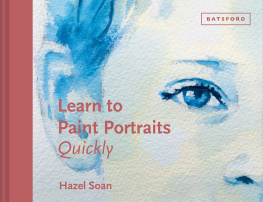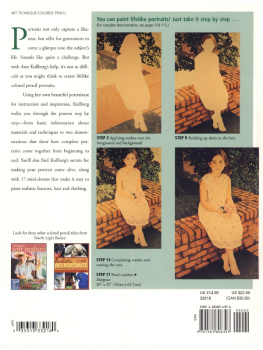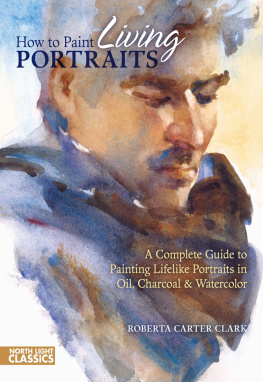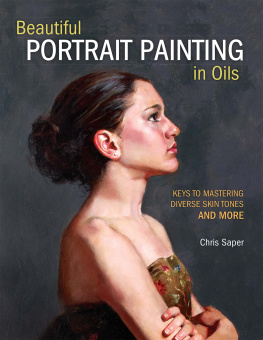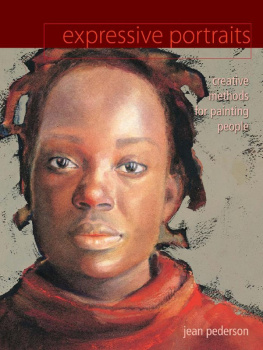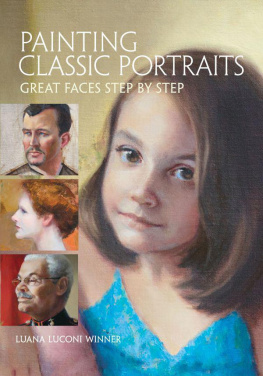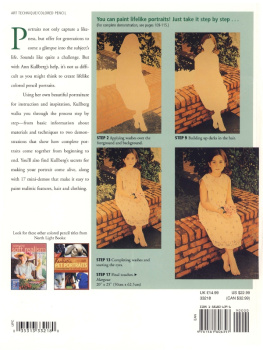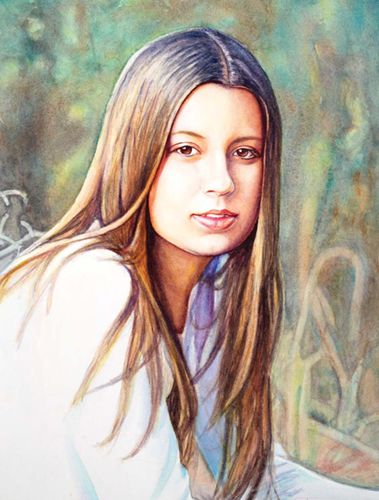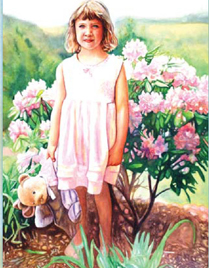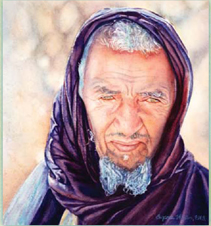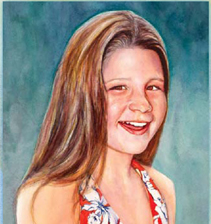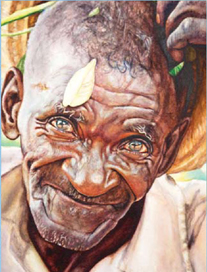I dedicate this book to my loving brother Buckley, who died March 31, 2008, during the process of writing my book. He was also gifted with art and had a creative and giving spirit. He touched many lives in his time here on earth, and I miss him dearly.
I also dedicate this book to my wonderful husband and friend, Sam, for supporting and encouraging me over the years; my two sons, Cooper and Reese, of whom I am very proud; my father Charles Reese; my mother Kay Cromartie; and my brother, Cody Reese. I love you all.
INTRODUCTION
Watercolor is a fun medium that doesn't have to be difficult. While it can be unpredictable, you have to learn to embrace the challenges it gives you. The more you work with it, the more familiar you'll become with what it does and learn how to control it by the amount of water you use.
Watercolor is often more about correcting mistakes than it is about painting. If you simply say, I can fix this problem and work through the challenges at hand, you're more likely to succeed. If you ask yourself how to fix the problem, the answer will come. Don't be afraid of the white of the paper. It's just paper, and you just need to cover it with color. Besides, if you mess up, you can always paint it again. Many times, you have to fail before you succeed. I know I certainly did.
I began my career in watercolor by painting a lot of different subjects. But after I decided to paint my children's portraits, I finally discovered my passion watercolor and people, young and old.
I was on fire. But there was a small problem. I could get the drawing and the expression right, but the colors were not exactly what I wanted. I painted and read everything I could get my hands on for several years. Through failure and success, I found a method that worked for me and is easily broken down into a formula.
In this book, I share that formula with you. I hope to help make the portrait-painting process easy to understand and achieve, and that the soulful portraits you desire to paint will be great successes.
Together, we will walk through the portrait painting demonstrations in this book, step by step. The subjects are all of different ages, male and female, with different skin tones. And I will share with you the tips I have learned over the years through trial and error. I hope this information will prepare you and provide you with the knowledge you need to make sound decisions about painting portraits.
And remember, it takes practice to become good at something. I had an instructor who once told me to paint every day, even if it's only for an hour or two. I truly believe that's one of the things that helped me the most. Learn all you can, but then just do it. You can actually learn more by just painting.
GOOD LUCK ON YOUR JOURNEY, HAVE FUN AND REMEMBER, PRACTICE MAKES PERFECT!
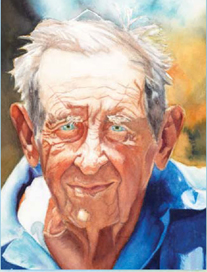
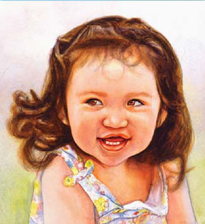
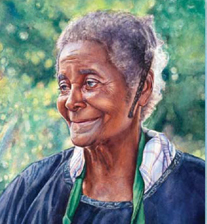
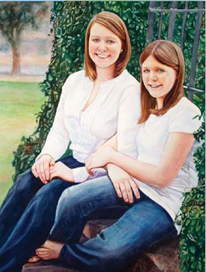
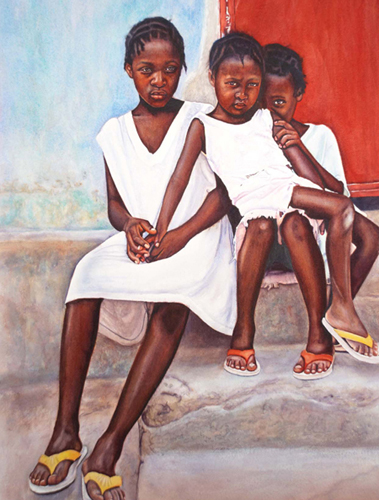
TOOLS & SUPPLIES
Over the years, I have used many different types of supplies for water-color painting. I have learned that the better my materials are, the better my paintings turn out. Through hard work and learning what supplies worked best for me, I have been able to achieve the results I desired. What follows is an account of the supplies I use and how I use them.
BRUSHES
Mainly you'll need a set of rounds. It's worth your while to spend a little extra money on a good set of sable rounds. I prefer Kolinsky sables. They have a great full body with a long, fine point. They are also designed to hold a lot of water. I also keep a couple of angle shaders. Ask your art supplier for suggestions or guidance if you need it.
PAPER
I can't stress enough the importance of good paper in portrait painting. It is essential and can be the difference between a good painting and a bad painting. I use Arches 300-lb. (640gsm) cold and hot press. The hot press is smooth and is particularly good for painting children because it nicely reflects their smooth complexions.
Cold press works well for character portraits. It has more texture and is great for painting a subject that has a lot of lines and textured skin. But this is only a general rule to go by; it is perfectly acceptable to interchange them.
PAINT
I use mostly Winsor & Newton watercolor paints, but I also like Holbein. I prefer the more transparent colors, and they seem to work better for the layering process. Each one affects the other when applied on top of one another. The tool checklist contains the colors I use on my palette. Some of the colors I use all the time, and some are add ins, which I add to my palette when I need them. If the color is a different brand than Winsor & Newton, I will include the name brand.
PALETTE
My palette has two sections with two separate palettes that fit together for traveling. The top palette and the bottom palette are both divided in the middle. This helps keep my paints fresh and divided into categories. One palette is used for flesh tones, and the other is set up for backgrounds.
PENCILS & DRAWING TOOLS
For drawing my subject matter, I use a mechanical pencil. Any kind will do. I prefer this type of pencil because it always keeps a point, and you never have to sharpen it. It also gives a fine-lined drawing with very little smudging. This is important to me because I am left-handed and tend to get a lot of smudge marks if I am not careful.
PAPER TOWELS
Bounty paper towels are my favorite. They hold a lot of water and are generally more durable than some of the other brands. I prefer the white ones. When you use ones with the designs, it is easy to confuse whether the paper towel has a design or paint on it.
WATER CONTAINER
The water container I use has four compartments because I like to have clean water at all times. If one compartment gets dirty I can just move to another. Having clean water all the time is essential when painting skin tones.

